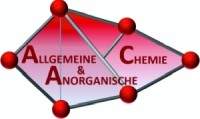Functional disilenes
With the first time isolation of a silicon analogue to vinyl lithiums 1 in 2004 by our group via the surprisingly straightforward and efficient reaction of Tip2SiCl2 with lithium powder (Tip = 2,4,6-triisopropylphenyl), we had an easy access to multi gram quantities of an anionic synthon for the transfer of Si=Si double bonds. The disilenide 1 is a thermally stable, crystalline orange material. Simple electrophiles generally react in a straightforward manner to yield the corresponding asymmetrically substituted disilenes.
The h1-disilenyl zirconium complex 2 that was reported by us in 2005 provides some first information on this type of interaction of a Si=Si double bond with a transition metal center. The intensely green color suggests involvement of the transition metal center in the electronic transition responsible for the absorption close to the infrared border of the visible spectrum. The activation of the Si=Si double bond hence achieved manifests in a facile rearrangement presumably via a radical pathway.
Another useful synthon is the allylic trisiladianion, which we obtained in the form of its magnesium salt 3. Compound 3 reacts smoothly with suitable dielectrophiles to unsaturated four-membered silacycles.
The reversal of the polarity of disilenide 1 can be achieved through its treatment with elemental iodine. The marginally stable iodo disilene 4 is a competent electrophile. The reaction with a lithium phosphanide served as proof-of-principle. The resulting phopshino disilenes 5 can of course be obtained in a much more straightforward manner directly from 1 and chlorophosphanes.

Peripherally functionalized disilenes
Halogen functionalities bonded to aryl substituents are compatible with Si=Si double bonds and can even be transformed to other functional groups. Surprisingly, the metal-halogen exchange reaction of para-bromophenyl disilene 6 withtBuLi cleanly affords the para-lithiophenyl disilene 7, which, however, is only stable at low temperature, but can be trapped with suitable electrophiles.

